Jan Kath revives the war rug in his debuting pop art-influenced Rug Bombs collection featuring classic Persian
rug motifs. Shown, Jet
BOCHUM, Germany -- Hand-knot contemporary rug studio Jan Kath has introduced Rug Bombs, a collection of 11 graphic wool and silk area rugs. The pop art-inspired designs of the newest collection sees artist and founder Kath train his lens on concepts of violence and conflict -- and the series will be on display as part of contemporary art exhibition Document Fifteen at Alte Brüderkirche in Kassel, a city in central Germany, until Sept. 25, 2022.
"Rugs are like a mirror of their time. In their many millions of knots tied together out of wool and silk, they have always reflected the lived realities of the people who design them," stated Kath of the range. Influenced by his family's experience with war and military conflict, overlaid with his own experience as a rug designer and maker -- and the son of an area rug merchant, Kath's Rug Bombs meet at the intersection of his family story, his life's work and recent history. The designs are rendered in a pop-art style, where familiar images of fighter jets, tanks and more receive a fresh contextual expression, and are embedded with traditional Persian motifs, updating the concept of the war rugs of Afghanistan.
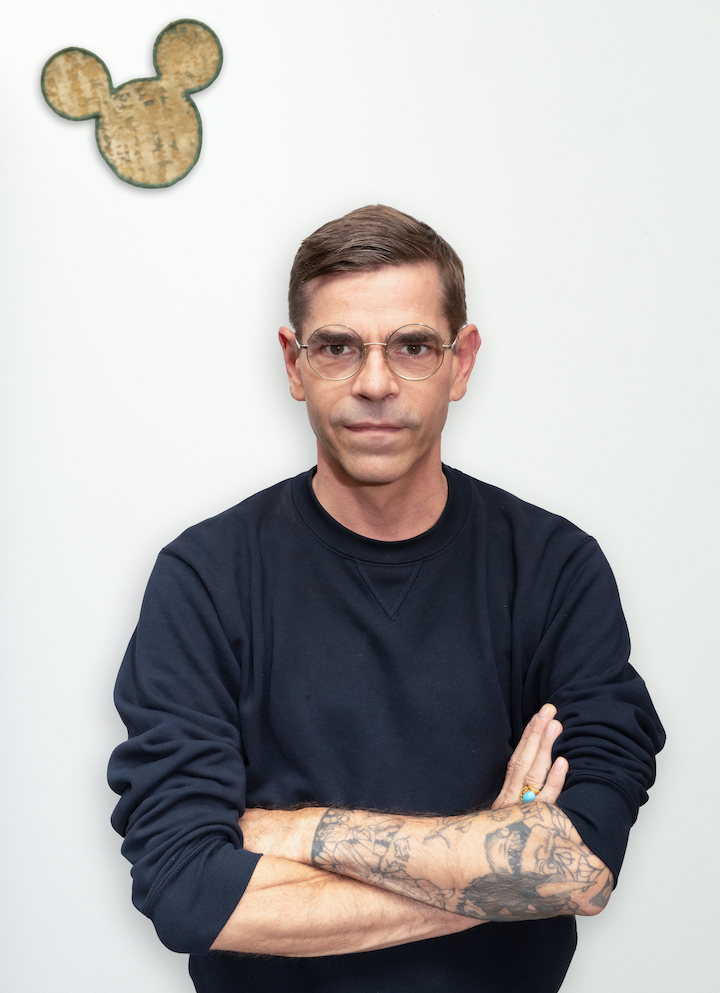
Artist, designer and founder of his eponymous German-based area rug studio, Jan Kath rolls out his contemporary
vision of war rugs.
Below, are Kath's reflections that explain the genesis of Rug Bombs and their craftwork.
Why did you focus on tanks, fighter jets, bombed-out cities in Rug Bombs?
JK: The events that led me to focus on the topics of war and violence date back to many years ago and have their origins in my childhood. The conflict in Ukraine was not the trigger for this work. Rather, it was the war in Iraq and its consequences. Abu Ghraib and Guantanamo took up a great deal of my attention and changed something in me. The dirty war in Syria and the mass refugee movements resulting from it did just the same thing, too.
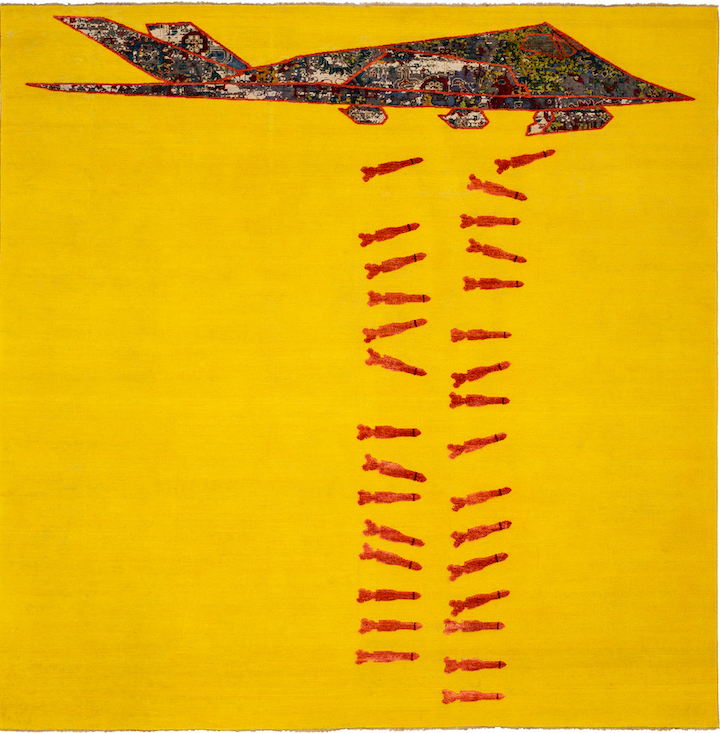
Rendered on a computer, each design is executed by master weavers in Nepal and India. Shown, Stealth
What influenced these rug designs?
JK: I was born in 1972. Even though I did not experience the Second World War, it was something that was always present during my childhood and youth.
I was very close to my grandfather. He was a Wehrmacht soldier and was stationed in Poland, France and Russia. He told me about all that in great detail: He took me back to the trenches and to the battles just outside Stalingrad; he took me back to the times when he lost his eye and most of his comrades.
Why focus on such difficult subjects?
JK: I soaked up every detail [of my grandfather's stories] like a sponge. I always wanted to know more. My aunts fled Silesia in a dramatic escape on a horse-drawn cart, and their memories stirred and left a mark on me. I have always been a person with a vibrant imagination. The things people tell me manifest in my memory in a highly visual way. The conversations from back in those days, the images from recent decades, and the collection of materials that I have maintained for a long time – all that has gone into this exhibition. I have been working on Rug Bombs specifically since about 2015.
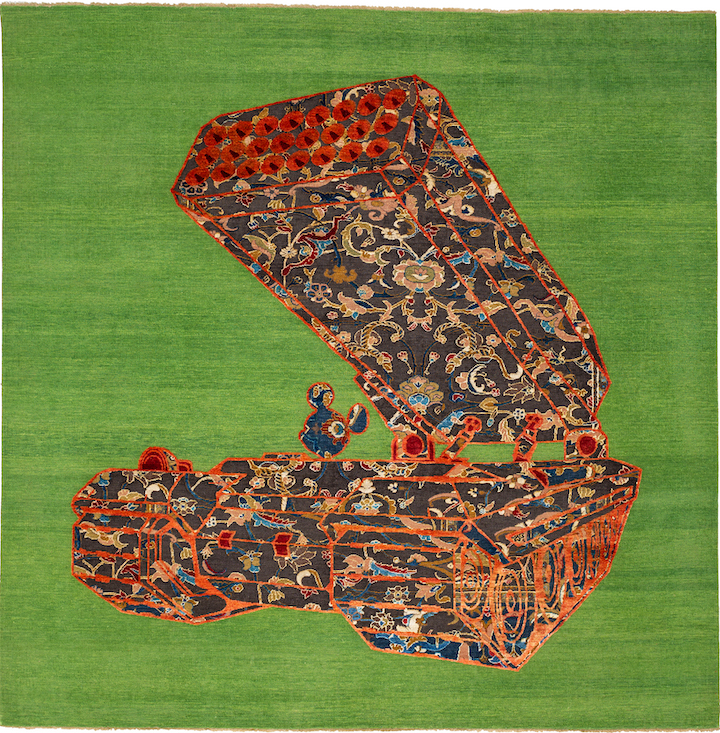
Pop art meets classic Persian rug motifs in the hand-knotted wool and silk Multi Rocket Launcher design by Jan Kath.
How has the history of making "war rugs" in Afghanistan shaped your new collection?
JK: With the Soviet invasion of 1979 having left an impression, the people there started incorporating tanks and rifles into their otherwise traditional patterns. Rugs at their core are nothing other than images for the floor and the wall where people tell their stories. This is even the case with the oldest known rug, the Pazyryk carpet, which is dated back to the fourth century BCE. It depicts a procession of 28 horses and their riders. The horses have a trimmed mane and braided tail while the horsemen have mustaches, wear cloaks, and carry a quiver with a bow and arrows. Combat situations definitely have been and still are the most popular subjects depicted, alongside hunting and wedding scenes. However, the narrative of a rug is also shaped by the person who made it or for whom it was made. Whether for kings or farmers; or Christians, Muslims, or Buddhists, many different beliefs and world views go into them. I feel deeply connected to this tradition and see myself as an active part of it.
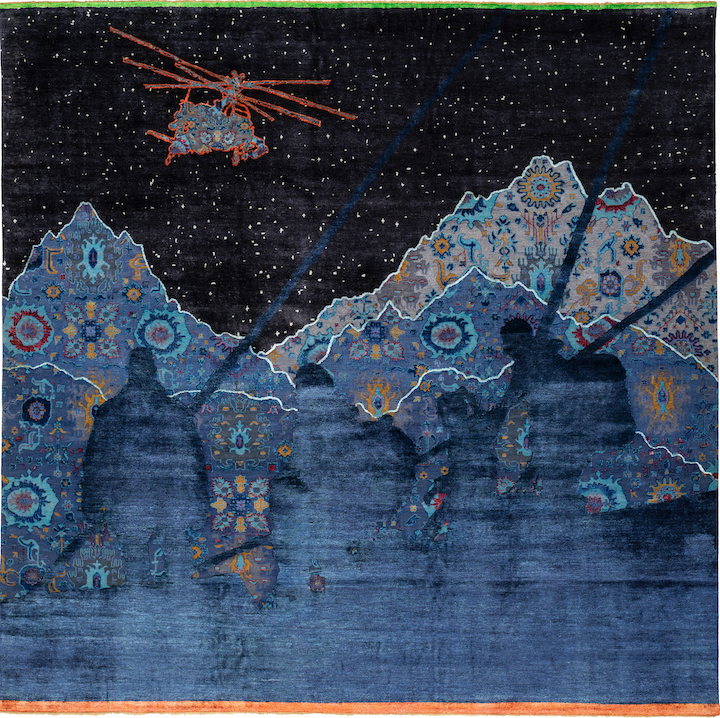
A Bidjar pattern weaves tradition into the contemporary hand-knotted Stopover design from Jan Kath's Rug Bombs.
Tell us how your computer-rendered designs are translated into area rugs by your artisan weavers.
JK: It is a little bit crazy how the weavers basically help me to express my personal language. I send them high-resolution images and they transform every pixel into a knot patiently and persistently. I have the utmost respect for the work involved in this craft.
I am extremely conservative when it comes to quality and inspect the rugs closely. We use only hand-combed and hand-spun highland wool and use production techniques that are hundreds of years old. The production process takes months. The slow growth of a virtual template becomes a part of the history.
You continually revive traditional patterns in Rug Bombs -- why?
JK: Be it Bijar, Tabriz, or Serapi, I grew up with these patterns. I use them to tickle viewers’ aesthetic habits at the same time. It is a very deliberate, disturbing effect. The rugs attract our gaze, allure our eyes and hands, and ensure that the subjects depicted penetrate our perception more deeply.
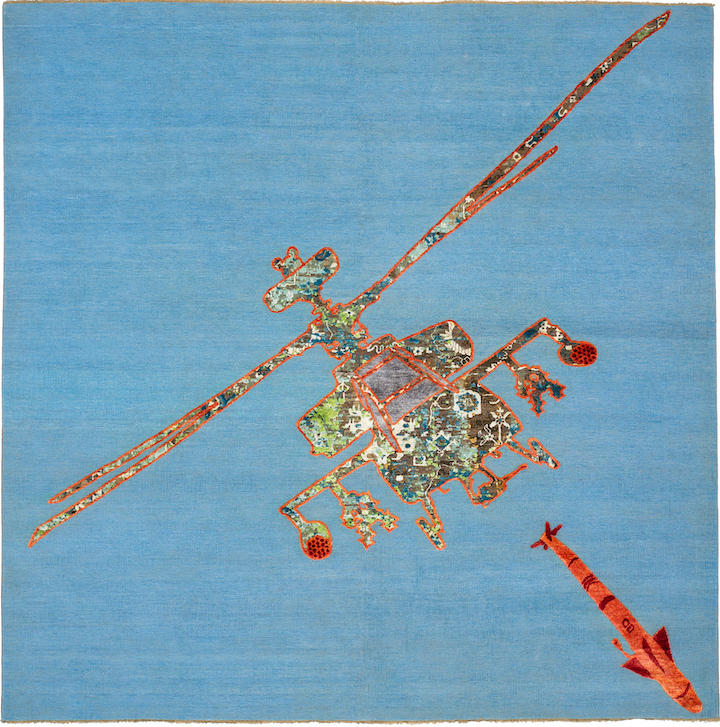
Jan Kath's Apache, crafted or wool and silk on cotton, features the fighter helicopter with iconic Persian rug motif.
In addition to the rugs that depict the “war rug” subjects in a broader sense, there is a photorealistic piece portraying a family in their living room. There is a father, a mother, a child, and a cat. It would be idyllic if it were not for the head of the family proudly brandishing an automatic rifle in the air. What is the story behind this?
JK: The photograph, taken by Kyle Cassidy, was published in his illustrated book Armed America in 2007. It shows American families who own weapons, with every second American being part of one statistically. I found Kyle Cassidy’s work to be very impressive and got the permission to portray one of his image subjects in textile form. The content of this piece is an antithesis to the almost archaic appearance of the “war rugs.” Consequently, it acts as a step back and asks about the beginning of history.
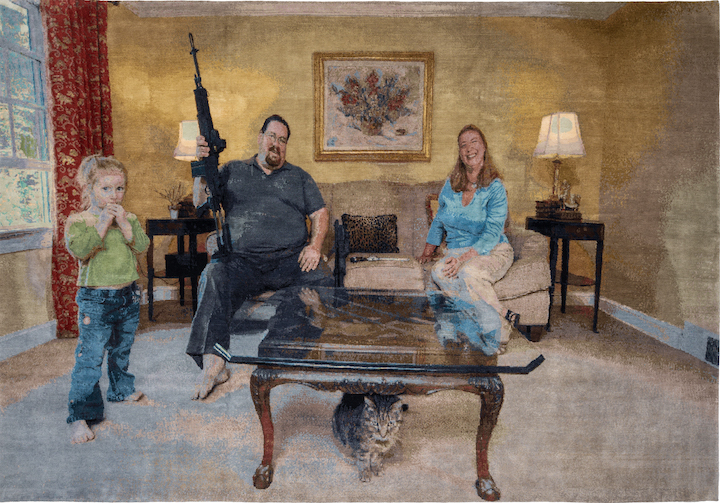
Photographer Kyle Cassidy's illustrated book
Armed America included this shot which Jan Kath renders into a rug.
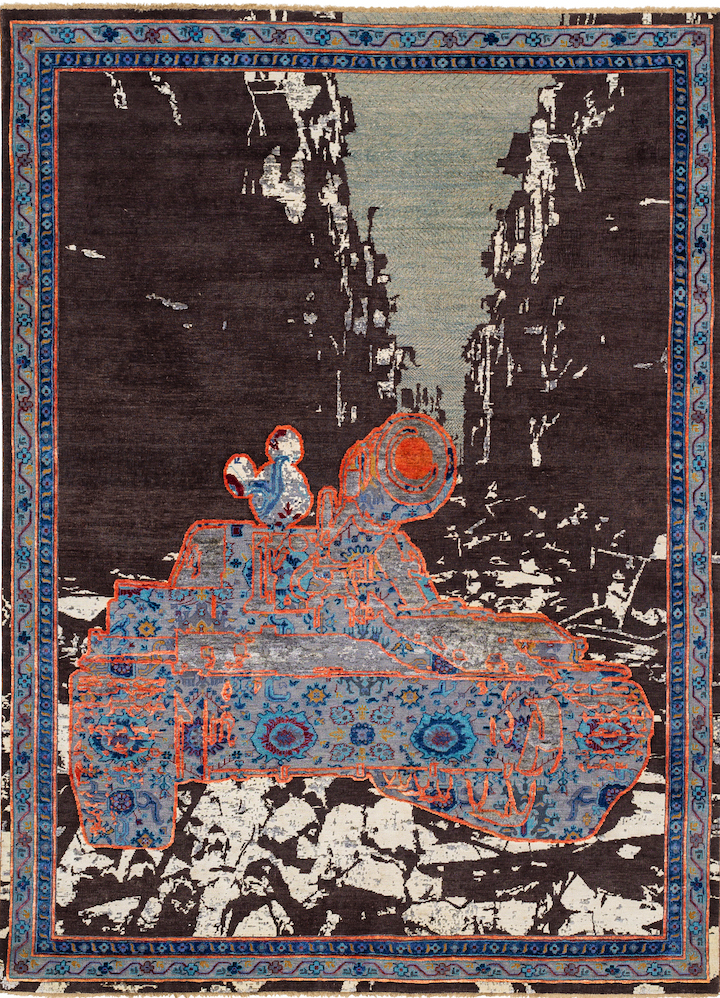
Jan Kath, who often interprets traditional motifs in a contemporary manner, infuses his Tank design with a Bidjar
pattern and border motif.
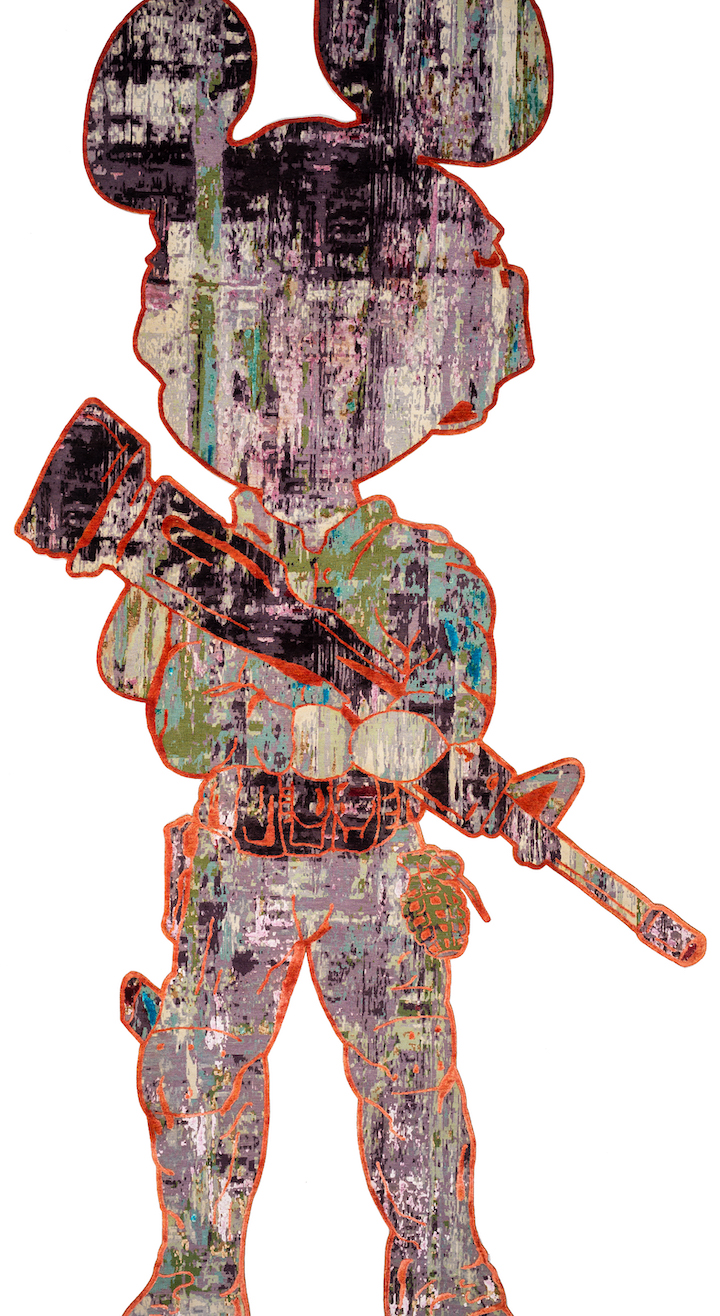 A cutting-edge cutout area rug design, Big Mouse by Kath, features with a Mickey Mouse-style head on the shoulders
A cutting-edge cutout area rug design, Big Mouse by Kath, features with a Mickey Mouse-style head on the shoulders
of an armed soldier.